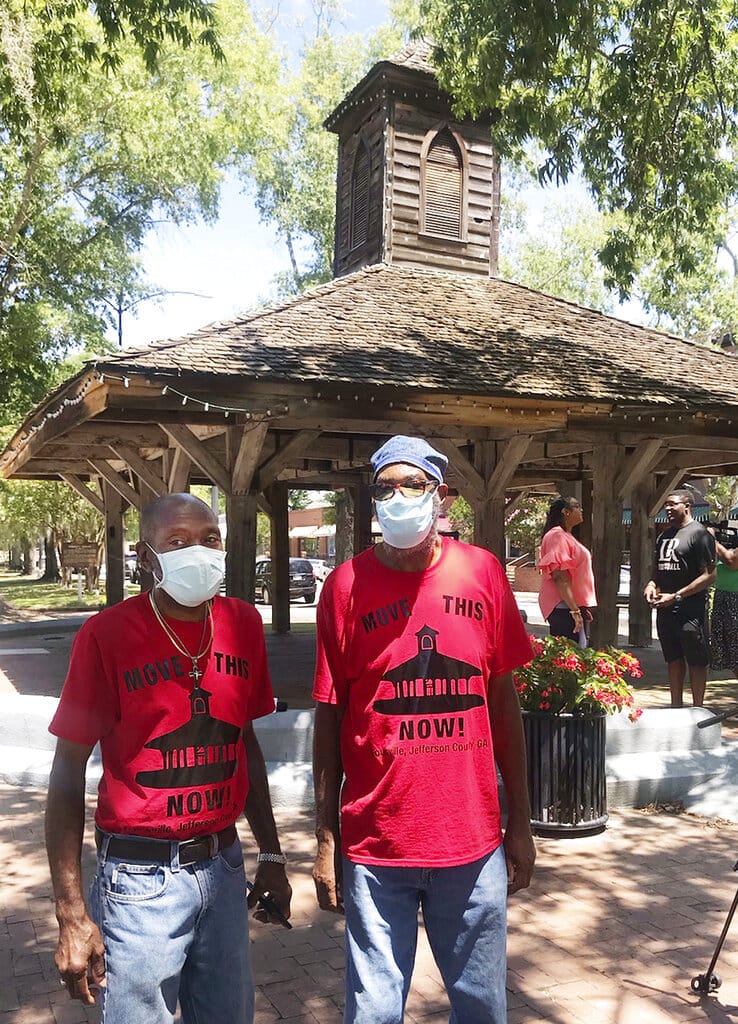ATLANTA — Amid a renewed push to remove Confederate monuments following the death of George Floyd, a rural Georgia city is confronting the fate of a rare, 18th-century pavilion where slaves were once sold.
The Market House, or Slave Market, in Louisville is on the National Register of Historic Places and has been held up as a cultural site by county officials. The open-air, gazebo-like structure dates back to the late 1790s and is among just a few buildings of its kind still standing in the U.S., according to historic documents filed with the U.S. Department of Interior.
Critics say it is a constant reminder of a painful part of the country’s history and needs to be taken away from downtown Louisville — a city of roughly 2,500 people about 50 miles (80 kilometers) southwest of Augusta where the majority of residents are Black.
The City Council is expected to make a decision about the future of the structure at its meeting Tuesday.
“When I ride by there, I see women with their children being torn apart and sold to other white men as their property,” said James Ivery, a former Louisville resident who is pushing for the structure’s removal. “I see that Black people in this country are no more than three-fifths of a human. It’s telling me that I am less than a dog or a cow or a horse that’s being sold.”
Like some opponents of removing Confederate monuments, residents who want to keep the Market House where it currently stands cite its historical value and say it can serve to teach visitors about the horrors of slavery.
Robert Yonchak said members of a local historical society hoped to do a better job of educating people about the structure, but were against removing it. Yonchak was on a committee tasked with making a recommendation to city officials about what to do with it.
“To us, everything that we see, everything we come across, is history,” he said at a meeting of the committee in July, according to the Augusta Chronicle. “Everything we leave here today is history. Our concern is that by taking down, relocating, removing the Market House we are going to lose that history.”
The committee voted to remove it from downtown. The City Council is expected to take up that recommendation Tuesday and make a final decision.
“We’re not trying to destroy it,” Cynthia Wells, another member of the committee, told WJBF-TV, “We just want it out of the downtown area. That should be an area where all people are comfortable.”
Some committee members said it should be relocated to a museum built in the community.
At least 77 Confederate statues, monuments or markers have been removed from public land across the country since Floyd’s death at the hands of police in Minnesota on May 25, making 2020 one of the busiest years yet for removals, according to an Associated Press tally. Most were removed by government officials, though protesters have toppled some.
But markers that many view as racist have not come down as swiftly in rural parts of the country.
The Market House was built between 1795 and 1798 and served as the center of commerce in Louisville when it was briefly Georgia’s state capital, according to documents filed with the U.S. Department of Interior in 1977 nominating it for the National Register of Historic Places.
Slaves were sold there from its inception. It was also used to sell land and household goods, according to the nomination.
As of 1977, much of the timber used in its construction remained, though it had been reinforced with iron.
The nomination called it “one of few extant structures of its type and purpose in the United States,” citing its age and excellent state of preservation, among other factors.
But for Ivery, 68, it has only been a symbol of hatred since his grandmother told him as a little boy how it was used. He asked her whether he could play there while they were shopping downtown one day.
“She said no,” Ivery, who is Black, recalled during a recent phone interview. “She said, ‘That’s where they used to sell colored people.’ That stuck with me up until this day.”



